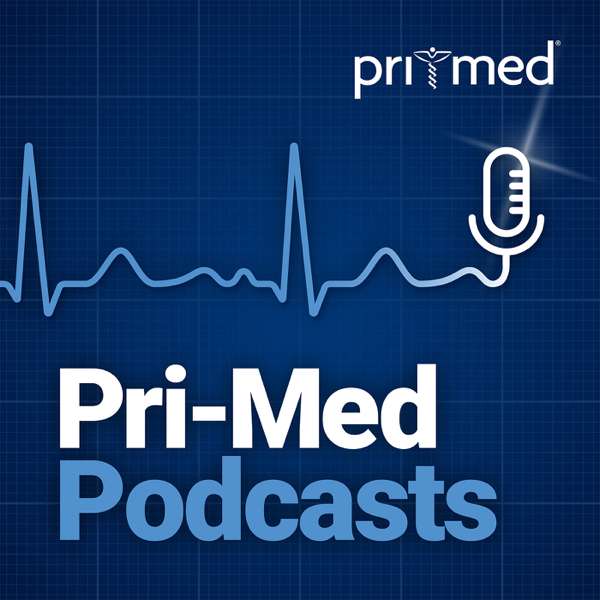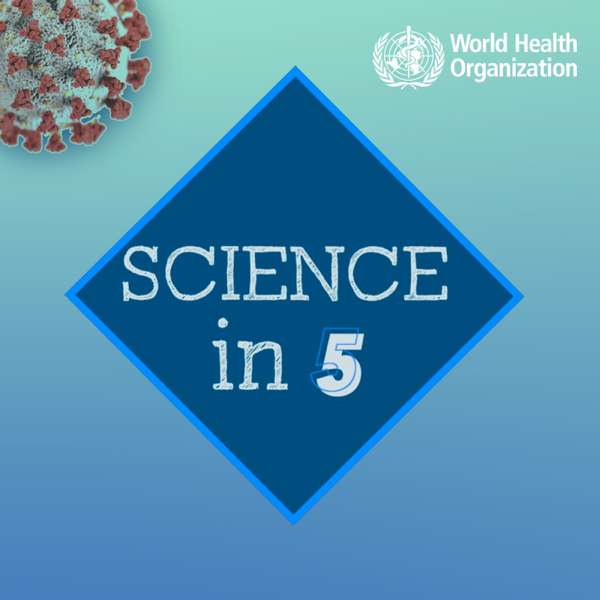This week, please join authors Paul Ridker and Eric Van Belle, editorialist Robert Harrington, and Guest Editor Allan Jaffe as they discuss the original research articles "Effects of Randomized Treatment With Icosapent Ethyl and a Mineral Oil Comparator on Interleukin-1β, Interleukin-6, C-Reactive Protein, Oxidized Low-Density Lipoprotein Cholesterol, Homocysteine, Lipoprotein(a), and Lipoprotein Associated Phospholipase A2: A REDUCE-IT Biomarker Substudy" and "Cerebral Microbleeds During Transcatheter Aortic Valve Replacement: A Prospective Magnetic Resonance Imaging Cohort" and the editorial "Trials and Tribulations of Randomized Clinical Trials."
Dr. Carolyn Lam:
Welcome to Circulation on the Run, your weekly podcast summary and backstage pass to the Journal and its editors. We're your co-hosts. I'm Dr. Carolyn Lam, Associate Editor from the National Heart Center, and Duke National University of Singapore.
Dr. Greg Hundley:
And I'm Dr. Greg Hundley, Associate Editor, Director of the Pauley Heart Center at VCU Health in Richmond, Virginia.
Dr. Carolyn Lam:
It's double feature time Greg. We've got two totally unique and interesting papers that we'll be discussing. The first, a biomarker substudy from the REDUCE-IT trial, that is looking at the effects of randomized treatment with icosapent ethyl, versus a mineral oil comparator, on inflammatory biomarkers. Now, don't use roll your eyes at me, because I'm telling you, this has results that you may not expect, and very, very important clinical implications, and implications for clinical trials.
The second paper, very much up your alley, Greg, is a prospective MRI study of cerebral microbleeds during TAVR. But okay, enough now to whet your appetite, let's now just first grab coffees, and discuss the other papers and the issue, shall we?
Dr. Greg Hundley:
You bet, Carolyn. And how about if I go first?
Dr. Carolyn Lam:
Please.
Dr. Greg Hundley:
So, Carolyn, my first paper comes from a group of investigators led by Dr. Araz Rawshani from the Institute of Medicine, and it included 715,143 patients with diabetes, registered in the Swedish National Diabetes Register, and compared them with over two million match controls, randomly selected from the general population, to determine the role of diabetes in the development of valvular heart disease, and particularly, the relation with risk factor control.
Dr. Carolyn Lam:
Huh? Interesting, diabetes and valve disease. All right. What did they find, Greg?
Dr. Greg Hundley:
Right, Carolyn. So they found, that individuals with type one and two diabetes, have greater risk for stenotic lesions. Whereas, risk for valvular regurgitation was lower in type two diabetes. Patients with well controlled cardiovascular risk factors, continued to display higher risk for valvular stenosis, without a clear stepwise decrease in risk between various degrees of risk factor control. So Carolyn, diabetes and a link with valvular heart disease.
Dr. Carolyn Lam:
Wow. Really interesting, Greg. Thanks. Well, the next paper is a preclinical study with really interesting clinical implications. Now, we know the human heart has limited capacity to regenerate new cardiomyocytes, and that this capacity declines with age.
Now, because loss of cardiomyocytes may contribute to heart failure, it is important to explore how stimulating endogenous cardiac regeneration, to favorably shift the balance between loss of cardiomyocytes and birth of new cardiomyocytes, occurs in the aged heart.
Now, these authors, Doctors Rosenzweig, from Massachusetts General Hospital, and Dr. Lee from Harvard University and colleagues, previously showed that cardiomyogenesis can be activated by, guess what? Exercise in the young adult mouse heart. However, whether exercise also induces cardiomyogenesis in aged hearts, however, is not yet known. So in today's paper, the authors aim to investigate the effect of exercise on generation of new cardiomyocytes in the aged heart. And here, we're talking about 20 month old mice, who were subjected to an eight week voluntary running protocol, and age matched sedentary animals who served as controls.
Dr. Greg Hundley:
Wow, Carolyn. Really interesting evaluation of exercise on cardiomyogenesis. So what did they find?
Dr. Carolyn Lam:
Endogenous cardiomyogenesis can be stimulated by exercise in aged hearts. Comparative global transcriptional analysis further revealed, that exercise and age specific changes occurred in gene programs. The regulator of calcineurin RCAN1.4 was specifically found to be induced with exercise in aged hearts, and was accompanied by reduced calcineurin activity. So what's a take-home message? Exercise induced cardiomyogenesis may counter the increased cardiomyocyte loss and reduced cardio myogenic capacity in elderly patients.
Dr. Greg Hundley:
Great, Carolyn. Well from the mail bag, there's an exchange of letters to the editor from Professor Zhou and Veith regarding a prior letter to the editor from Professor Jin and associates, pertaining to the previously published article "SPARC, A Novel Regulator of Vascular Cell Function in Pulmonary Hypertension." And also, there's a Perspective piece, from Professor Mentz entitled, "Catastrophic Disruptions in Clinical Trials."
Dr. Carolyn Lam:
There's also a Research Letter by Dr. Kumar on [entitled] "von Willebrand Factor Is Produced Exclusively by Endothelium, Not Neointima, in Occlusive Vascular Lesions in Both Pulmonary Hypertension and Atherosclerosis." There's also this beautiful tour of Cardiology News from the literature, from Tracy Hampton, which ranges from a study linking COVID-19 to higher long term cardiovascular risks, which was published in Nature Med, to uncovering alternative metabolic pathways involving cell fate transitions, published in Nature, to designing an autonomous biohybrid fish, from human stem cell derived cardiac muscle cells, that was published in Science. Wow. Isn't that amazing, Greg? Well, let's get on now though, to our two feature papers. Shall we?
Dr. Greg Hundley:
You bet.
Welcome listeners, to these two feature discussions on this particular day. And our first feature today, we have with us Dr. Paul Ridker, from Brigham and Women's Hospital in Boston, Massachusetts. Dr. Bob Harrington, from Stanford University in California. And also, Dr. Allan Jaffe, from Rochester, Minnesota. Welcome to you all.
And Paul, we're going to start for you. Can you describe for us, the background information that really went into the construct of your study, and what was the hypothesis that you wanted to address?
Dr. Paul Ridker:
Sure, Greg. So first of all, my thanks to the AHA and the Circulation for publishing this paper, we always want to support the AHA, and we're delighted to be here today for these podcasts.
The field of omega-3 fatty acids has been a complicated one for a long time. Epidemiology suggested that, fish consumption would lower cardiovascular risk, and there was a number of trials done. And my friend and colleague here at the Brigham, Deepak Bhatt, was the lead of a very big trial, called REDUCE-IT. Some 8,000 plus patients who received EPA alone, and they got a terrific result. A 25% reduction in their primary endpoint. And this was a New England Journal paper, back in 2019 or so. But another friend of mine, Steve Nicholls, ran another large trial of a combination of eicosapentaenoic acid, or EPA, plus docosahexaenoic acid that's DHA called STRENGTH. And that one showed, really, no benefit. And so, there's been some controversy out there.
In any event, when Deepak and his colleagues published their original paper, they said it's interesting, because they got this big risk reduction, but it wasn't apparently due to the triglyceride lowering of the drug. And so, my interest, as many people know, has largely been in inflammation biology. And so we said, well maybe we should just do a test. Well, we said, we'll measure a number of biomarkers that we know were associated with atherosclerosis, some inflammatory, some with coagulation. And so, that was the core hypothesis, was simply to look at some other markers, and see what we might learn. And sometimes, you learn things that you didn't expect. And I think, that goes to the heart of what complicated clinical trials are all about. And I'd also say perhaps, what the roles of surrogate endpoints are, as compared to hard clinical endpoints, and things that make this whole field kind of interesting.
Dr. Greg Hundley:
Right. Very nice, Paul. So you mentioned REDUCE-IT, so describe a little bit more for your study. What was the study population, and what was your study design?
Dr. Paul Ridker:
We were fortunate enough to work with REDUCE-IT investigators, to use their biobank. They had put together, again, it's 8,000 plus patients. I think, it was two thirds secondary prevention, one third primary prevention. And when they received the combination of EPA and DHA, as I said earlier, they had about a 25% reduction in the risk of their primary endpoint, which was cardiovascular death, nonfatal AMI, nonfatal stroke, coronary revascularization, and the like.
What we did is, we basically said, "Okay, since the mechanism was uncertain, why don't we go ahead and measure a series of biomarkers?" Things that a lot of us are interested in, homocysteine, LPLa, oxidized LDL, my own interest in inflammation. We measured, IL-1β, we measured, IL-6, we measured CRP. We measured another molecule, Lp-PLA2, that people have been interested in.
And the hypothesis, of course, was to see what the drug did, as compared to the comparator did. And the findings were interesting to us, in that, to simplify them, the actual icosapent ethyl arm didn't do much to most of those biomarkers, very little change. But the mineral oil comparator arm had some small to modest effects on all those biomarkers, all of which went up again. Now, some of these effects are pretty small, two to 3% for things homocystine, LPLa. Others were moderate, 10 to 20% increases in oxidized LDL, Lp-PLA2. And the inflammatory markers went up about 25%, sometimes, even a little more. So it's complicated.
It's important to point out, that these changes on an absolute scale are relatively small. On a percent scale, they're different. The REDUCE-IT investigators themselves, to their credit, had earlier published that, they saw some increase in LDL cholesterol as well, about 10, 11% in those who had received the mineral oil comparator. So it's not exactly what we thought we were going to find, I guess, is the simplest way to express it.
Dr. Greg Hundley:
Very nice. And so, describe for us just a little bit more, any differences in men and women, and what about age? Or for example, premenopausal, postmenopausal women.
Dr. Paul Ridker:
No, the effects were quite consistent across all various subgroups. It's a very large study. There were, again, 8,000 patients, lots of blood samples been drawn. And I should again, commend the REDUCE-IT investigators, for allowing us to do this work with them. And again, as I point out, sometimes you find things out that weren't what you expected. And the hard part, I was glad this got tossed over with Dr. Harrington, is sort to figure out well, what's it really mean? Because again, as a clinical trial list, I will say, my instincts are to trust the primary endpoint of the trial. That's what they did. They're going to go out and lower heart attacks and strokes. And then, here we are a couple years later, trying to figure out what the mechanism might be, and just came across some puzzling results.
Dr. Greg Hundley:
Very nice. Well, next listeners, we're going to turn to the editor that actually processed this manuscript, Dr. Allan Jaffe. Allan, what drew you to this particular article?
Dr. Allan Jaffe:
Well, I was asked to be a guest editor this week, by the Journal, because of some conflicts that were intrinsic to the editorial board. And since I have an interest in biomarkers, and had for a long time, it made perfect sense for me to become involved. I was particularly interested in this particular area, because I was aware that there were these two trials that had found different endpoints, and that there were some controversy as to what the mechanisms might be by which these effects could occur. And so I was pleased to get involved. And I think it's a compliment to the REDUCE-IT investigators, and to Dr. Ridker, that they were willing to put the data out there so that everybody could see it. And we could then begin to look.
So it was of interest to me. I thought it was important to the field, to get really good reviewers who would be, make sure that the data that would eventually be published was clear, so that readers would understand it. And so that, at the end, we'd be able to at least, come to some conclusions that we could end up having an expert in clinical trials. And I thought about Bob Harrington, right from the beginning, might be able to comment on.
Dr. Greg Hundley:
Very nice. Well, Bob he's setting you up here nicely, both Paul and Allan, to really help us put these results in perspective with other studies that have been performed in this space. What are your thoughts?
Dr. Robert Harrington:
So first off, Greg, thanks for having me. And Allan, thanks for inviting me to review and comment on the paper. As both Allan and Paul have indicated, that I've spent the last 30 plus years doing clinical trials of all sizes. Very small, where we try to understand mechanisms, and very large, where what we're trying to understand is clinical outcomes. And I've been intrigued in this field, because of the inconsistency of the data across the field. Where in some trials, Paul had indicated this STRENGTH, there seemed to be no effect of omega-3 fatty acids, and in REDUCE-IT, there was quite a pronounced effect of the test agent. And so, when one sees discordance in a field, one tries to understand, well, why might that be? And so in the editorial, I took the position that, well, what are we trying to do in clinical trials?
And in outcomes trials, we're trying to figure out what matters to patients. Do they live longer? Do they feel better? Do they avoid bad stuff happening to them? Like having to undergo revascularization procedure. So you're trying to do things that are really clinically meaningful, but that doesn't say that you're also not trying to understand mechanism. And as Allan said, there have been some questions raised. And so, trying to understand mechanism in the edit in trials can be quite useful, not just to understand that trial results, but to really form hypothesis for a field going forward. And so, I took the approach of, we learn things from different trials, and sometimes we learn things in the same trial. Meaning that, there's mechanistic work embedded in the large trial. One of the most famous examples of this, in the GUSTO trial 30 years ago, we learned through the mechanistic substudy, that it was rapid reprofusion TIMI-3 establishment of TIMI-3 flow, that really explained the difference between TPA and streptokinase. So I was very intrigued by how we might use these data to explore the results.
And I find the findings fascinating, as Paul said. It is complicated, but it raises a really fundamental issue in clinical trials. There's an assumption in a placebo control trial, that because randomization is allowing you to balance everything, except for the randomized treatment groups, and therefore, that comparison has causal information in it. There's an underlying assumption that's really important. And that is, that the placebo is inert. That it has no biological effect of its own. Well, that assumption was violated here. The placebo is not inert in this clinical trial.
Now, the investigators, I think to their credit, have said, "Well, this is small, probably doesn't matter." And that might be right, but it also may be wrong. And you can't just say, well, it doesn't matter, these are small effects. As Paul said, some of the effects are small, some are medium, some are large. So what explains it? And I made a point in the editorial, you could model all of this. If you get 5% of this, and 10% of this, and 20% of this, you could make some assumptions and say, well, the magnitude of the benefit was so great that it couldn't have been overcome by this. But that's just modeling, and there's uncertainty. So for me, as a trialist, and somebody who really believes in using evidence to guide practice and to guide public policy, I think there's uncertainty here.
It's likely that the treatment effect is not as large as was observed, but how large is it? And how large is important? And how large might we want to consider to put into our practice guidelines? I think all of those open questions, particularly in a field where there is inconsistency across trials, in terms of the observation of the outcome. So my conclusion is, we need more work. We need another trial, if we really want to understand this. And we need to use an inert placebo, to really understand what the contribution was. I'd like nothing better to see that it didn't matter. But I can't say that it doesn't matter because I don't know.
Dr. Greg Hundley:
Well, listeners, boy, we've got kind of some interest here in that an unexpected result. So Paul, it's nice doing an interview like this listeners, because each speaker sets up the next one. Paul, Bob is saying, well, what should we do next to clarify the results here? So maybe we'll go through each of you, and start with Paul. Just describe for us, what do you think is the next study that we need to perform?
Dr. Paul Ridker:
Well, Greg, it's a really interesting issue. We saw it, as authors, to write as neutral a paper as we could possibly write, and sort of do our academic job and say, here are the data. And I think we did it that way because, we don't really know what the interpretation should be. On the one hand, you have a very big beneficial result, which is great for patients. And there's a prior clinical trial called JELIS, which was open label, the same drug, and also got a large benefit. And we were trying to figure out mechanism. That being said, as Bob pointed out, I think what we stumbled into is some level of uncertainty. And the question is, how uncertain would it be, and does it matter in the big picture?
Allan was interesting, because the Journal asked us to use the word comparator, rather than placebo. Now this was designed as a placebo controlled trial, but our paper uses the word comparator, because of the possibility, that as Bob Harrington points out, it may not be totally inert. So the writing of this was quite carefully done. I think, at the end of the day, my REDUCE-IT colleagues, who I have great respect for, and really worked terribly hard to do the main trial, understandably feel, that the trial would've showed, and I have a lot of sympathy for that, because it's the hard endpoints we should go with.
On the other hand, I have sympathy with the idea that it never hurts to have more data. And if there could be a way to have a second trial, and I might change the population a little bit, maybe I'd do it in true primary prevention. This was one third primary prevention. My colleague, Joanne Manson had done her, she had a trial where they showed some potential benefit in the black populations. Maybe you might over sample some minority groups. But just the pragmatic issues here, make it tough to have a second trial. And so, uncertainty is just part of what we, as physicians, have to learn to live with.
Dr. Greg Hundley:
Allan, turning to you. What do you think is a next study to perform in this space?
Dr. Allan Jaffe:
Well, I think what Paul has said is correct. That it would be very hard to generate enthusiasm funding for a large trial. But it might not be nearly as difficult to begin to explore the effects of the mineral oil comparator, versus the active agent, versus perhaps, another potential placebo, and see over time what happens in primary prevention patients, as a way of beginning to put some context around what these results might mean. So for example, it could turn out that, the active agent actually kept the values from rising as they normally would've, and mineral oil had no effect at all. Alternatively, mineral oil may well have been a negative. It had a negative effect. And I think, those are the sorts of questions that could be explored reasonably in the short term, without doing another multimillion dollar randomized trial.
Dr. Greg Hundley:
And Bob, your thoughts.
Dr. Robert Harrington:
Well, and I mentioned this in the editorial, Greg. I didn't make my recommendation lightly. I know that these trials are expensive. I know these trials take a great deal of time, a great deal of energy. And I know that the REDUCE-IT investigators worked enormously hard over the years to get this done. So I don't say tritely, "Oh, just do another trial."
But if you think about the magnitude of the public health issue here, there are millions of people to who this kind of therapy might apply globally. And so, shouldn't we be more certain than less certain, if we want to include it, for example, in ACC/AHA guidelines? I would say, the answer to that is yes. And so, I think of it as, okay, let's make some assumptions. Let's assume, that the effect that was observed in JELIS and REDUCE-IT, is the true effect. That's ground truth.
Well, there are different study designs one might think about, from an analytic perspective, using Bayesian statistics, as opposed to frequency statistics. One might think about an intense interim analysis plan, to understand where the data are going, and be able to pull in the prior data for evaluation. I would advise getting a smart group of people together, who spend their lives thinking about trials in the atherosclerotic space, and the REDUCE-IT team is pretty darn good, and say, "How could we do this efficiently?"
I do think, there's enough uncertainty that it would be ethical, from an equipoise perspective, to include high risk patients in a second evaluation, because we do have uncertainty. And if we really want to nail this down, I think we could look at high risk patients with hypertriglyceridemia, and try to use some interesting design issues, and some interesting analytical issues, to try to reduce the sample size, lot of attention in interim analyses, to try to answer the question. I'd like, as I said, nothing better to say, "Oh look, REDUCE-IT was the truth." This next trial is consistent. That'd be, to me, a terrific outcome of this.
On the other hand, if you said to me, "Well, the effect's not 25%, it's more in the 15% range." Well, maybe then we think about how we apply it to our patients a little differently, maybe a little more cautiously. So I don't make the recommendation lightly, as I said, but I do think that there are some conversations that could be had, being respectful of the effort and the expense that goes into these kind of things. To try to answer the question efficiently.
Dr. Greg Hundley:
Very nice. Well listeners, we want thank Dr. Paul Ridker, from Brigham and Women's Hospital, Dr. Bob Harrington from Stanford University, Dr. Allan Jaffe, from the Mayo Clinic, for bringing us the results of a substudy of the REDUCE-IT trial, that assessed a variety of serum biomarkers, pertaining to systemic inflammation, and highlighting uncertainty around the mechanism regarding the efficacy of icosapent ethyl, that's been used previously for primary or secondary prevention of cardiovascular events.
And next listeners, we are going to move to our second feature discussion and review some data pertaining to microbleeds in the central nervous system, during and after TAVR procedures.
Welcome listeners, to our second feature discussion on this August 2nd. And we are going to explore some of the world of TAVR and its potential complications. And we have with us today, Dr. Eric Van Belle, from Lille, France. And also, Dr. Manos Brilakis, from Minneapolis, Minnesota. Welcome gentlemen.
And Eric, we'll start with you. Can you describe for us a little, the background information that you use to assemble and construct your study, and describe, or list for us, the hypothesis that you wanted to address?
Dr. Eric Van Belle:
Yes. Thanks a lot for the question. So we knew for many years, that some of the complication of the TAVR procedure relate to the brain. And it has been described by many others, that there were some complication in the brain of patient undergoing TAVR. And there was no previous investigation on potential bleeding or microbleeding in this population.
And on the other side, there are previous publication on, of course, initially chronic microbleeding, in patient with some of, let's say, disease in the brain, but also, a possibility of acute microbleeding. And especially, in some interesting population relating to the TAVR feed, that is patient with valve disease, patient with endocarditis, or patient with assist device.
In this population, microbleedings, acute microbleeding, have been described. And what is interesting, if you look at all these populations, these are population in which the Von Willebrand factor has been impacted and modified, and could be one of the reason of the microbleeding. And one of the similar feature of the patient with aortic stenosis that undergo TAVI, or TAVR, that are patient with indeed also, this kind of Von Willebrand disease.
So if we put everything together that is previously, we only looked at antibody complication in those population, and that Von Willebrand disease, which is present in patient with aortic valve stenosis, could promote a bleeding, in particular, bleeding in the brain. We decided to look at the potential appearance of microbleeding, in patient undergoing TAVR procedure.
Dr. Greg Hundley:
Very nice. And Eric, can you describe for us, your study design, and who was your study population?
Dr. Eric Van Belle:
Yes. So basically, the study population is a basic population of patient undergoing TAVI. Just to make sure that one of the difficulty of this study, was to conduct and perform an MRI, a brain MRI, before the procedure, and as short as possible after the procedure, within three days, which is logistically challenging. And also, to make sure that we keep most of the population to undergo the MRI, we had to exclude patient with a high risk of pacemaker, or patient with pacemaker that could not undergo the MRI. But basically, without this, it's just a regular population.
And if we indeed, compare to some of the previous work I was mentioning, about describing the acute MRI, it was important for us to make sure, or to be as sure as we could get, that indeed, this microbleeding, if we observe them, could be related to the procedure. And it means that, the MRI, after the procedure, should be done as short as possible. And also, that an MRI, a baseline MRI, should be performed. Because we know, that in this population, you could have some microbleedings also observed before starting the procedure.
Dr. Greg Hundley:
So a cohort study design where MRIs are performed before, and then very soon after, TAVR procedures. So Eric, what did you find?
Dr. Eric Van Belle:
So what we observed, the first thing that we confirmed was indeed, that in this population of that age, that is patient around 80 years old, when we do the baseline MRI, you find in about one out of four patients already, some microbleedings. And this was expected, and it is very similar to what is expected in this kind of population.
But what was indeed more striking, that when we repeated the MRI after three days, we observed another 23% of patient with a new microbleedings that were observed. This is indeed the most important observation. What was also important that, the patient with microbleedings, and the location of the microbleedings, were not related to the cerebellum brain, because indeed we could observe some cerebellum arise in this population, as it is expected. And there was no relation between the two. So it's also, an important observation, suggesting that this microbleeding are not hemorrhagic transformation of cerebellum brain, for instance. And we also observed that, the risk of microbleeding, or the chance to observe the microbleeding, was increased when the procedure was longer. And also, when the total duration of anticoagulation was longer, we also observed that, when the procedure was, when we used protamine at the end of the procedure, the risk of microbleeding was less. And also, importantly, the status of the Von Willebrand factor, and indeed, an alteration of the multimer of Von Willebrand factor, was also associated with the risk of microbleeding in this population.
Dr. Greg Hundley:
Very nice. So in this cohort of 84 individuals, average age around 80, undergoing TAVR procedure, and about 50/50 men and women, you had several factors. Prior history of bleeding, amount of heparin, absence of protamine, all indicating a higher risk of these microbleeds. So very practical information. Well, Manos, you have many papers come across your desk. What attracted you to this particular paper? And then secondly, how do we put these results really, in the context of maybe other complications that can occur during or after TAVR procedures?
Dr. Emmanouil Brilakis:
Yes, thanks so much, Greg. And also, congratulations Eric, for a wonderful paper, and thanks for sending it to circulation.
I think, with increasing the number of targets, as you know, TAVR now is becoming the dominant mode for treating severe aortic stenosis. Safety is of paramount importance. And even though there's been a lot of progress, we still have issues with the safety of the procedure. So understanding how can make it safer is very important. And I think, what was unique in this paper, again, congratulations for creating this study, is that it opens a new frontier. We worry about stroke. We're all very worried about the stroke, and having the patient have a permanent neurologic damage during the procedure. But there may be more to it than the classic embolic stroke. And I think, this study opens actually, a new frontier with the micro cerebral bleeds.
Now we don't completely understand, despite the study, we don't understand the functional significance from this. And I think, that's one of the areas that will need further research. But I think, trying to understand what causes them, and preventing those microbleeds, would have a very important role in the future, for making TAVR even safer than it is.
Dr. Greg Hundley:
Very nice. Well, Manos, you really lead us into the kind of the next question. So Eric, what do you see as the next study to be performed in this sphere of research?
Dr. Eric Van Belle:
Again, to me, and to follow with the comment of Manos, we need to include, I would say, to solve two questions. We have to solve the question of, what could really impact these microbleedings. And what would be the impact of this microbleeding on the long term outcome of this patient? So it's means that we have to set, as part of the studies that we will design, potentially studies on aortic immolation. Or let's say for instance, we could investigate the role of protamine. It has been suggested that protamine could be something interesting, so it could be tested as part of a randomized study. But this means that, as part of such randomized study on the use of protamine, for instance, you would include a last cohort of patients with MRI after the procedure. And also, a long term follow of the neurological complication, which indeed, is the missing part of our current study. We would need to have a much larger cohort of patients, to be able to reconnect the neurological outcome to the MRI outcome, and also to include this.
So let's say, for me, one of the studies we would be interested to perform, is to conduct a study on the use of protamine, which is very simple, randomized, yes or no, and includes brain MRI in this population, as a systematic investigation, which is difficult to conduct. You have to know that it's difficult to do, but it will be very important. And then, to look at the long term neurological outcome.
Dr. Greg Hundley:
And I see, Eric, you mentioned the long term, because really in the short term, so within six months, you really didn't see any changes in neurological functional outcome or quality of life. So Manos, just coming back to you. What do you see is the next study that should be performed in this space?
Dr. Emmanouil Brilakis:
Yeah, I agree actually, with Eric. The next step is, this was an 80 patient study. Right? It's a very small preliminary data, all that opens a new system for evaluation, we're still a very small number of patients. So having a larger number of patients, I think for me, the key thing is to understand the connection. Does this actually cause neurologic symptoms? What does it mean having a microbleed? I think right now, we're still confused on the study. There was not really much impact on the neurologic status of the patient.
So for me, the number one thing is, to understand how it impacts the patient's quality of life, the neurologic status. Perhaps more sensitive studies, neurocognitive studies, to understand exactly how it impacts. And then after doing that, I agree with Eric, if this is a bad, something really bad, then we can find different ways to prevent them from happening. Protamine is one of them during the procedure time, and not be a very feasible one. Or it could be interesting to see if different valves, for example, have different propensity for causing those microbleeds.
Dr. Greg Hundley:
Very nice. Well listeners, we want to thank Dr. Eric Van Belle, from Lille, France, and also, our own associate editor, Dr. Manos Brilakis, from Minneapolis, Minnesota for bringing this very important study, highlighting that one out of four patients undergoing TAVR has cerebral microbleeds before the procedure. And then, after the procedure, one in four patients develop new cerebral microbleeds. And then, procedural and antithrombotic management, and persistence of acquired Von Willebrand factor defects, were associated with the occurrence of these new cerebral microbleeds.
Well, on behalf of Carolyn and myself, we want to wish you a great week, and we will catch you next week On the Run.
Dr. Greg Hundley:
This program is copyright of the American Heart Association 2022. The opinions expressed by speakers in this podcast are their own, and not necessarily those of the editors, or of the American Heart Association. For more, please visit ahajournals.org.

 Our TOPPODCAST Picks
Our TOPPODCAST Picks  Stay Connected
Stay Connected







